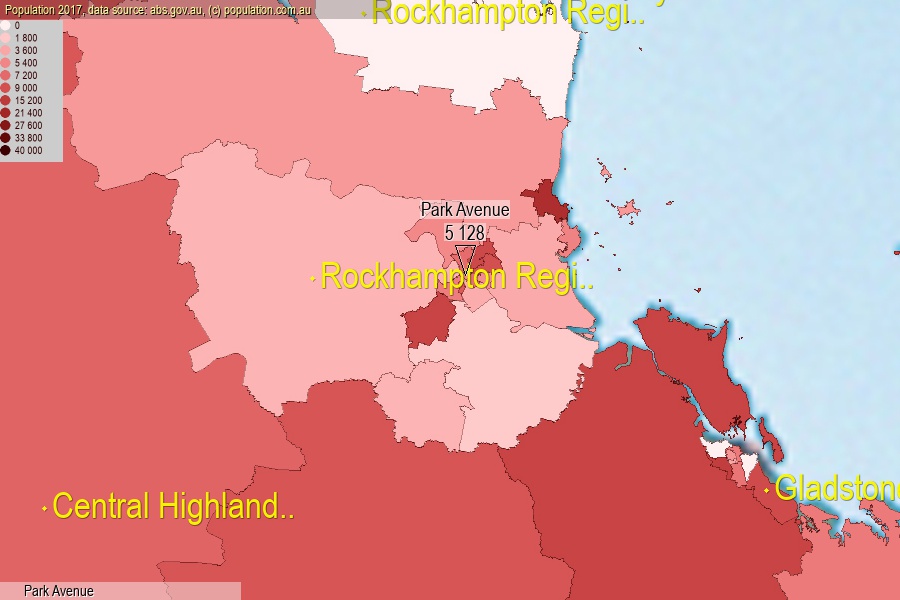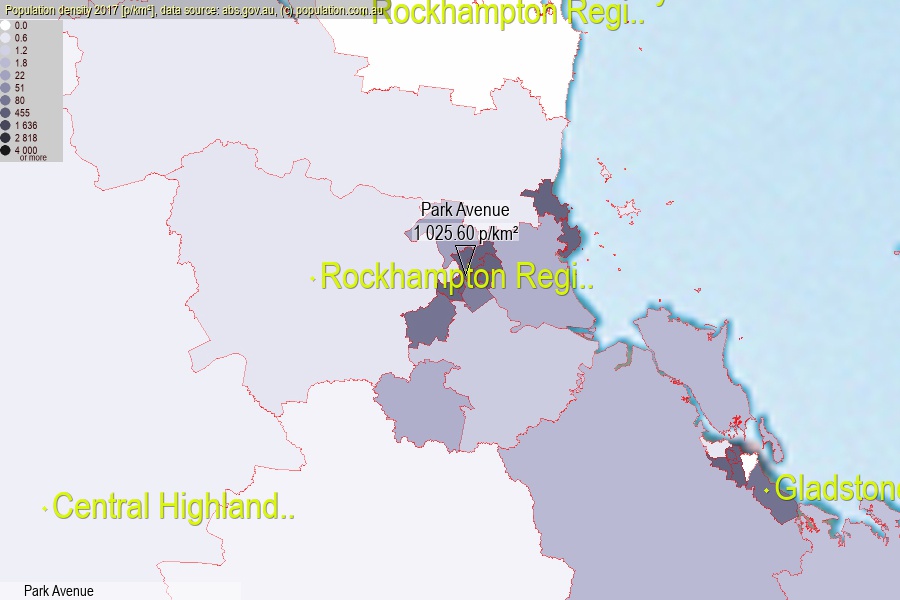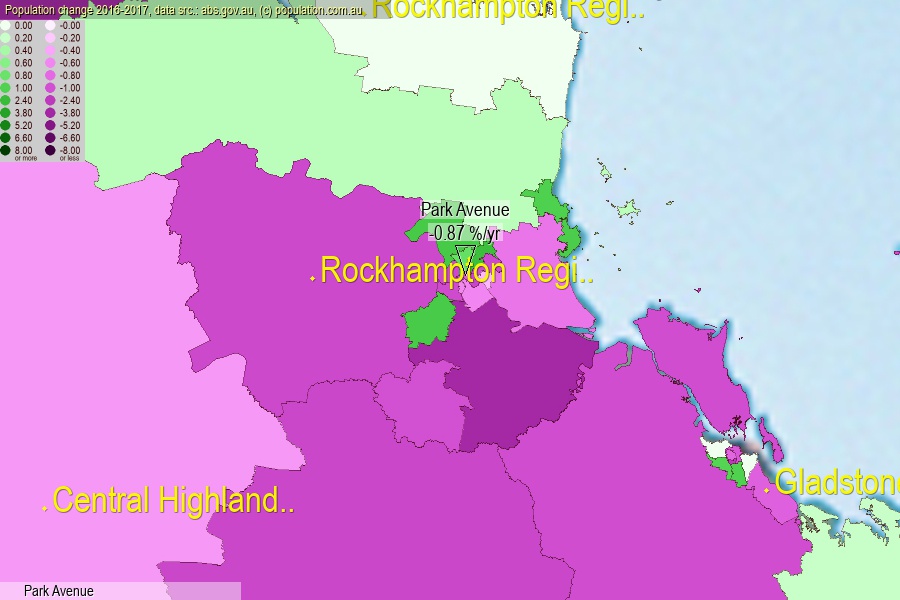 population.com.au
population.com.auLast official estimated population of Park Avenue (as Statistical Area Level 2) was 5 128 people (on 2017-06-30)[2]. This was 0.02% of total Australian population and 0.103% of QLD population. Area of Park Avenue is 5.00 km², in this year population density was 1 025.60 p/km² . If population growth rate would be same as in period 2016-2017 (-0.87%/yr), Park Avenue population in 2025 would be 4 782. [0]



Click to enlarge. Park Avenue is located in the center of the images.
Population [people], population density [p./km²] and population change [%/year] [2]
View borders » (new window) [4]
[1991-1992] -2.43 %/Yr.
[1992-1993] -2.84 %/Yr.
[1993-1994] -1.47 %/Yr.
[1994-1995] -2.90 %/Yr.
[1995-1996] -0.54 %/Yr.
[1996-1997] -1.66 %/Yr.
[1997-1998] -1.65 %/Yr.
[1998-1999] -0.42 %/Yr.
[1999-2000] -1.14 %/Yr.
[2000-2001] -1.21 %/Yr.
[2001-2002] -0.31 %/Yr.
[2002-2003] +0.22 %/Yr.
[2003-2004] +1.19 %/Yr.
[2004-2005] +0.57 %/Yr.
[2005-2006] +0.62 %/Yr.
[2006-2007] 0.00 %/Yr.
[2007-2008] -0.79 %/Yr.
[2008-2009] -1.10 %/Yr.
[2009-2010] -1.02 %/Yr.
[2010-2011] -0.29 %/Yr.
[2011-2012] -0.65 %/Yr.
[2012-2013] +1.01 %/Yr.
[2013-2014] -0.22 %/Yr.
[2014-2015] -2.54 %/Yr.
[2015-2016] -3.58 %/Yr.
[2016-2017] -0.87 %/Yr.
[0] Calculated with linear interpolation from officially estimated population
[1] Read more about SA2 and Australian Statistical Geography Standard (ASGS) on abs.gov.au
[2] Population data from Australian Bureau of Statistics (Population and density: 2017; change: 2016-2017)
[3] Digital Boundaries: Australian Statistical Geography Standard (ASGS) 2016.
[4] Border coordinates are simplifyed using Ramer-Douglas-Peucker algorithm.